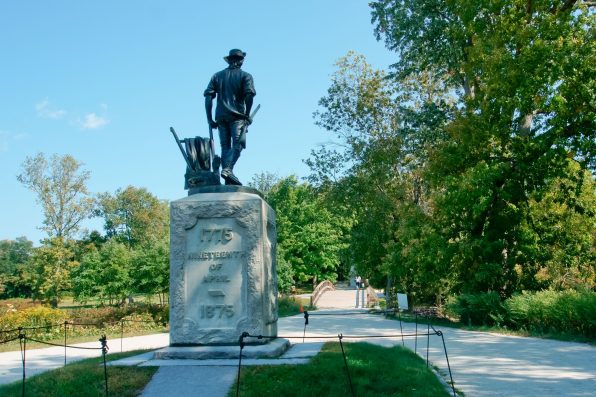During one of the first battles of the American Revolution, colonial militiamen fired musket balls at their enemies. Five of these musket balls have been unearthed in Concord, Massachusetts.
According to the National Park Service, the artifacts were found in Minute Man National Historical Park near the North Bridge, just under 20 miles northwest of Boston.
On April 19, 1775, American militiamen and British soldiers exchanged fire in that area. After analyzing the sizes and markings on the objects, archaeologists determined that they came from the battle in which the famous “shot heard ’round the world” occurred.
“As soon as they pulled one of them out of the ground, there was a kind of ‘look what I have,'” said Jarrad Fuoss, a park ranger and expert in historical weapons. “The excitement continued to grow because it wasn’t just one. The fact that we found five of them…is incredible all these years later.”
The night before the fight at the North Bridge, hundreds of British soldiers marched from Boston to Concord with the aim of destroying the colonists’ equipment. Before arriving in Concord, they stopped in Lexington, where they engaged in a brief fight with a smaller group of colonial militiamen.
In Concord, colonial and British forces faced each other from opposite sides of the North Bridge. Later, the event was memorialized in the poem “Concord Hymn,” written by Ralph Waldo Emerson in 1837. Emerson referred to the conflict as “the shot heard ’round the world.”
The encounters of that day were known as the Battles of Lexington and Concord. They spanned 16 miles. At the end of them, 96 militiamen and 273 British soldiers were dead. The battles were the beginning of the United States’ efforts to gain independence from Britain.
When experts examined the five small lead balls, they noticed that a thick band ran around the circumference of each one. The indentations were formed when a shot was fired from a smooth-bore musket. They serve as evidence that the musket balls had been used as ammunition.
The musket balls also varied in size, which was further proof that the colonial militiamen had made them. In contrast, the British used musket balls that were of a standard size.

Sign up for Chip Chick’s newsletter and get stories like this delivered to your inbox.


